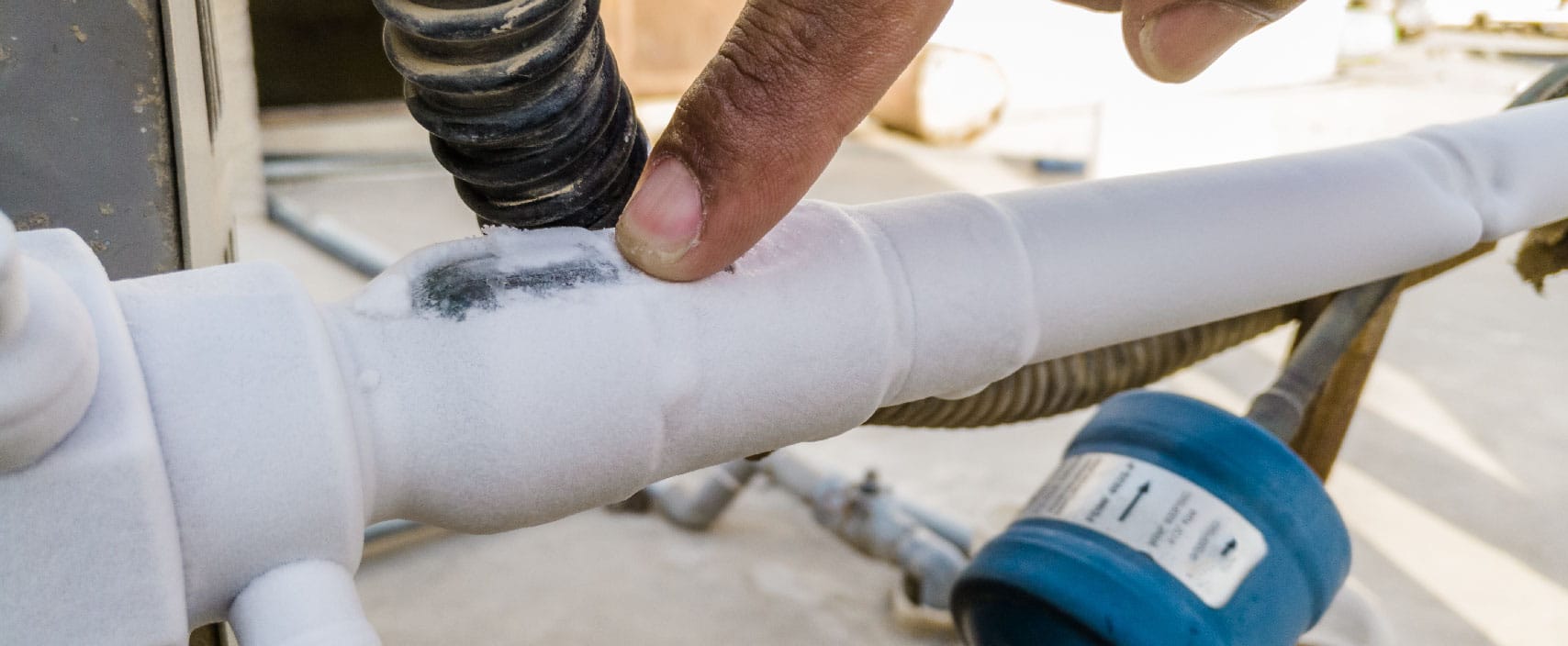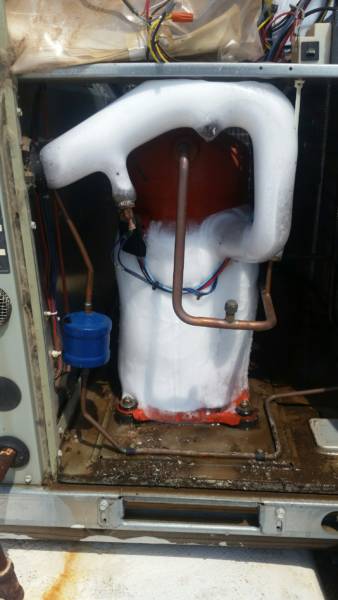My AC Pipe Is Frozen - What Do I Do? Guidance for Homeowners
My AC Pipe Is Frozen - What Do I Do? Guidance for Homeowners
Blog Article
Right here below you might get a bunch of quality answers around Why Is Ice On My Outside Air Conditione.

Introduction
Finding that your a/c pipeline is frozen can be worrying, particularly during warm summer months when you count on your air conditioning system one of the most. Comprehending what to do in such a scenario is vital to stop more damages to your cooling system and guarantee your convenience inside.
Recognizing the Causes
A number of variables can contribute to the freezing of an air conditioner pipe. Comprehending these reasons can aid you address the issue successfully.
Absence of Airflow
One usual source of an icy a/c pipeline is inadequate air movement. When the air movement over the evaporator coil is limited, it can trigger the coil to drop below freezing temperature, bring about ice development on the pipe.
Low Refrigerant Levels
Insufficient cooling agent levels in your air conditioner system can likewise lead to an icy pipeline. Reduced refrigerant levels can create the stress in the system to go down, causing the freezing of moisture on the evaporator coil.
Winter Conditions
In colder environments, freezing temperatures outside can add to the freezing of air conditioner pipelines. If your a/c unit is not properly insulated or if there are leaks in the ductwork, chilly air can infiltrate the system, triggering the pipeline to freeze.
Dirty Air Filters
Dirty or stopped up air filters can restrict air flow in your air conditioning system, bring about various issues, including a frozen pipeline. It's vital to change or cleanse your air filterings system frequently to make certain correct air flow and avoid ice buildup.
Signs of a Frozen Air Conditioning Pipe
Identifying the indicators of an icy AC pipe is critical for timely action.
Minimized Airflow
If you discover a substantial decline in airflow from your vents, it can suggest an icy pipeline.
Ice Buildup on the Pipe
Noticeable ice build-up on the cooling agent line or the evaporator coil is a clear sign of a frozen AC pipeline.
Unusual Sounds from the Unit
Uncommon noises, such as hissing or gurgling, coming from your air conditioning unit can signify that there's ice present on the pipeline.
Immediate Actions to Take
When faced with an icy a/c pipeline, it's necessary to act rapidly to prevent additional damages to your cooling system.
Shutting off the air conditioner
The initial step is to shut off your air conditioning system to prevent the system from running and intensifying the problem.
Looking for Blockages
Inspect the area around the indoor unit for any blockages that might be obstructing air flow, such as furnishings or curtains.
Thawing the Pipe
You can utilize gentle techniques like putting towels soaked in warm water around the icy pipeline to assist thaw it slowly.
Preventive Measures
Taking preventive measures can aid avoid future events of an icy air conditioning pipeline.
Normal Maintenance Checks
Arrange regular upkeep checks with an expert HVAC technician to make sure that your AC system is running successfully.
Changing Air Filters
Frequently change or clean your air filters to prevent air flow restrictions and preserve optimal performance.
Insulating Exposed Pipes
If your air conditioner pipes are revealed to cold temperature levels, think about protecting them to stop freezing during cold weather.
Seeking Professional Help
If DIY approaches stop working to solve the concern or if you're uncertain regarding just how to proceed, it's ideal to look for assistance from a qualified HVAC service technician.
When DIY Methods Fail
If your efforts to thaw the pipe or address various other concerns are not successful, it's time to call in a professional.
Value of Hiring a Professional HVAC Technician
A licensed HVAC specialist has the competence and tools required to diagnose and fix problems with your air conditioning system securely and efficiently.
Conclusion
Managing a frozen air conditioner pipe can be a discouraging experience, but recognizing how to react can assist decrease damage and recover comfort to your home. By comprehending the reasons, recognizing the signs, and taking timely activity, you can properly address the problem and protect against future occurrences.
Frozen AC Line: Why It Happens & What To Do About It
A frozen AC line can be a rather peculiar sight in a place like Phoenix, Arizona where nothing ever freezes. In this post, we’ll discuss what makes an air conditioner line frozen – and what you can do about it.
Dirty Air Filters
Did you know that you should be cleaning or replacing your air filters on a monthly basis? Failing to do this can result in airflow issues that, in turn, cause your evaporator coils and lines to freeze over. You’ll notice a buildup of ice on both components, although the buildup on your pipes will, of course, be more evident unless you open your air condition up to reveal the coils.
What To Do About It
Give your air filter a good cleaning if it’s reusable. If not, replace the filter outright. Next, switch your air conditioner’s fan setting on and leave it there for 2-3 hours. This will draw warm air in, helping to thaw your evaporator coil. You can also check out this article for some tips on cleaning the coils themselves if you’d like to speed the process up. Before you switch the unit back to its normal state, make sure the supply vents are completely unobstructed and free of dust or other debris.
If you keep having this issue even after replacing your filters regularly, contact a local HVAC repair company and have them inspect your evaporator coil, ductwork, and any other components that may be at fault. If you live in the Phoenix, Arizona area, give American Home Water and Air a call.
Low Refrigerant Levels/Leakage
What To Do About It
Contrary to what air conditioner “recharge” companies often tell their clients about refrigerant, it should never need to be simply refilled. You see, refrigerant runs in what experts refer to as a “closed loop.” Refrigerant really shouldn’t be leaving that loop. If it is, you’ve got a leak.
Paying someone to come and pump more refrigerant into your system (aka “recharge” it) isn’t the solution. Doing that will simply kick the can down the road. Besides, refrigerant leaks can be harmful to the environment and people in your home.
Rather, you need to take care of the leak with the help of a technician. Check out this article for some more information about dealing with air conditioners that are leaking refrigerant. Before you contact a technician, switch your thermostat to the off position. Then, switch the fan setting on and let it run for 2-3 hours so the unit can thaw.
Improper Temperature Setting
Improper temperature settings can also cause a drop in your air conditioner’s pressure. What many people don’t realize is that air conditioners are actually designed to run when temperatures have fallen above roughly 60 degrees Fahrenheit. If you run the unit when it’s cold outside, you’ll run into many issues, including frozen components.

I recently found that article about Have a Frozen AC Line? Here’s How to Fix It when exploring the internet. Sharing is caring. Who knows, you may very well be doing someone a favor. Kudos for your time. Kindly visit our blog back soon.
Get Started Report this page